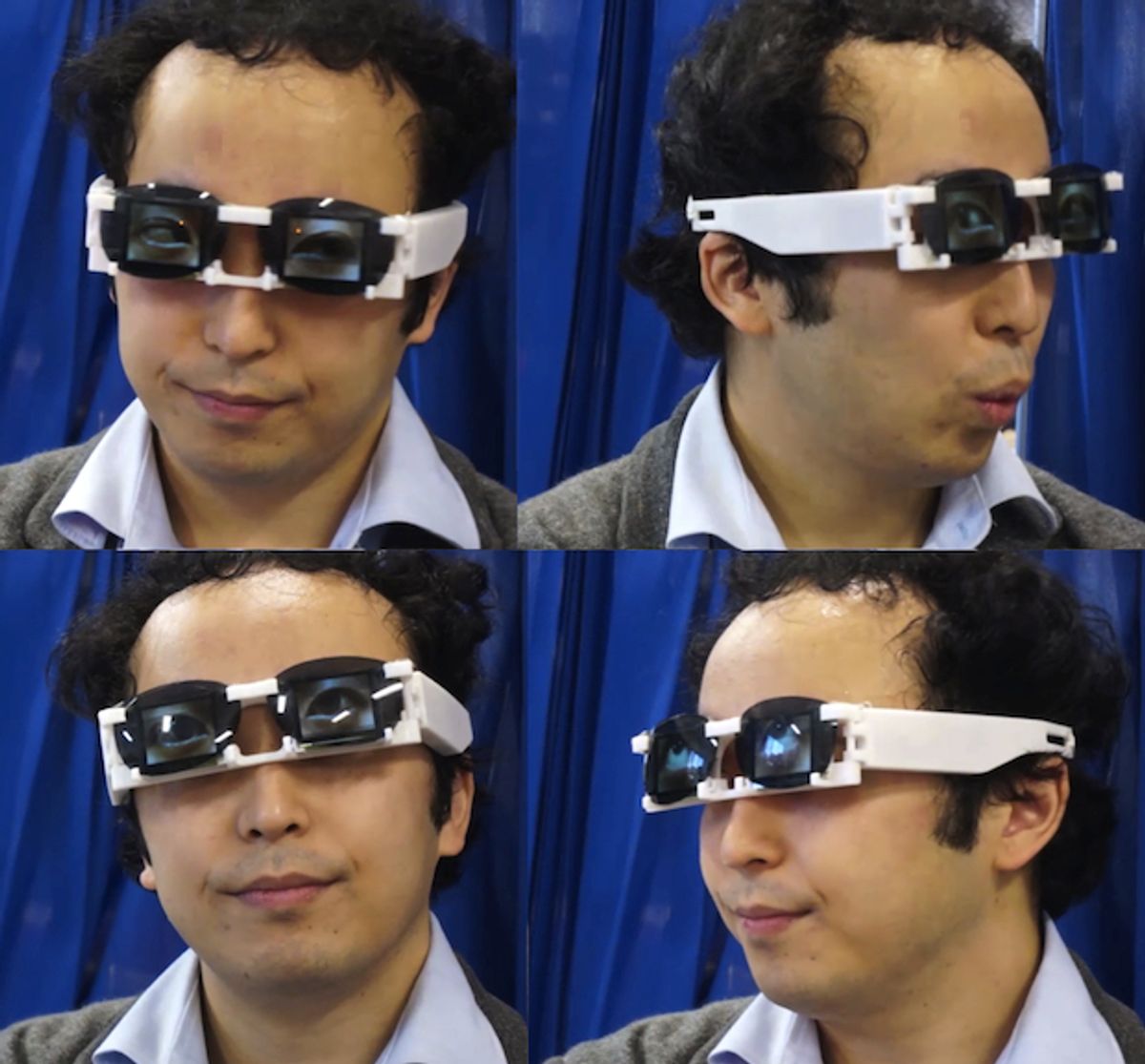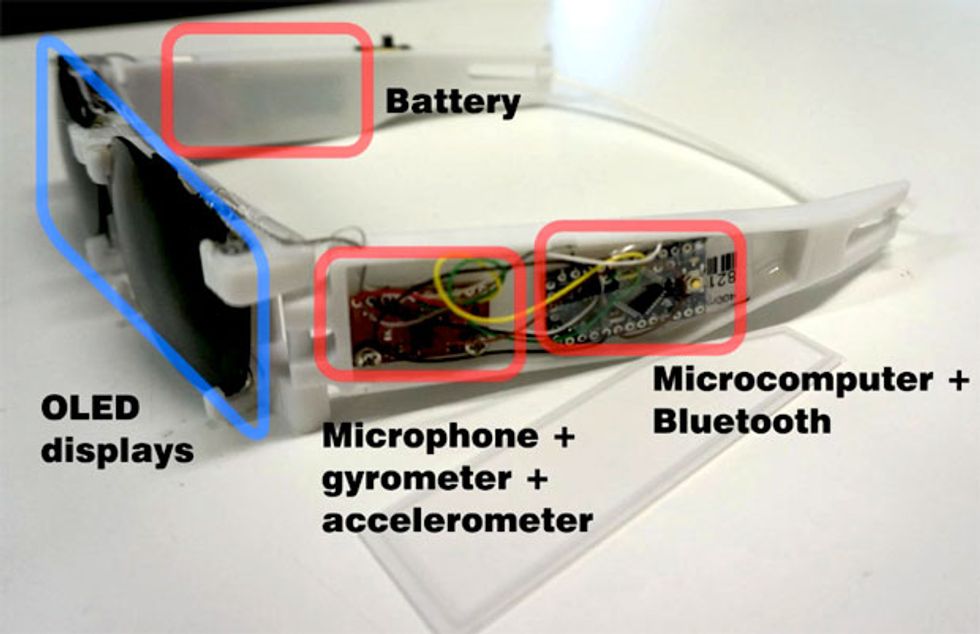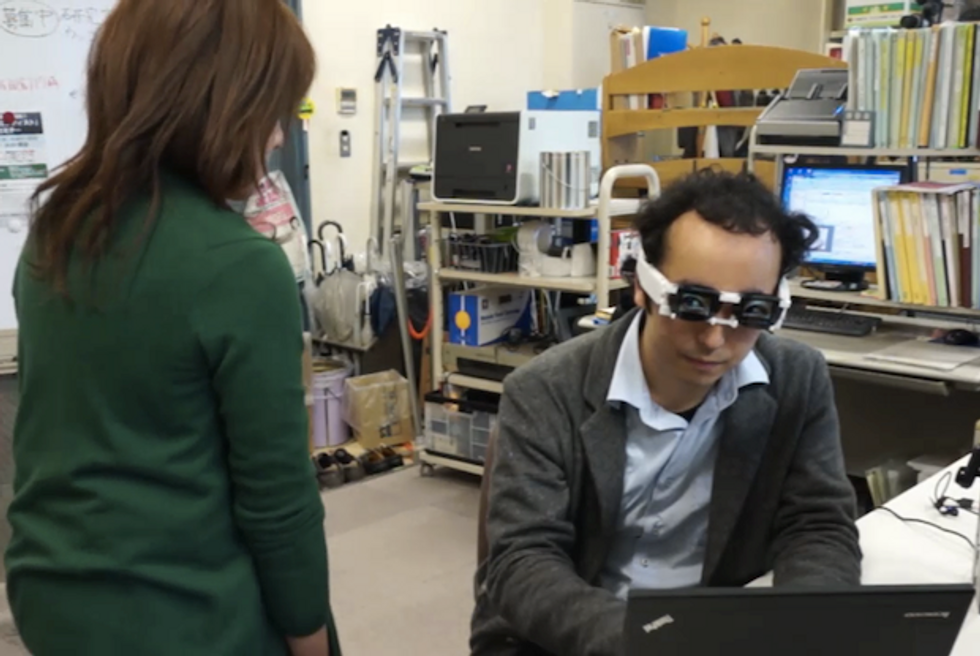Have you ever had trouble concentrating in the office as people walk by and glance at you? Do you come off as unfriendly or aloof, when you’re really just focusing on your work?
Dr. Hirotaka Osawa from Tsukuba University, in Japan, has developed a new wearable device to help us with something called “emotional labor.” His idea is that people could adopt cyborg technology to increase the emotional comfort of those around us. In this case, the device is a crazy pair of glasses that display eyeballs on their lenses.
The device’s virtual eyes naturally follow people and movement, making it appear as though you’re friendly and approachable, even if you’re too busy doing something else or too tired to actually look friendly and approachable.
“This emotional support reduces a user’s cognitive load for social manners,” Osawa says.
Check out his whimsical video below, which won the Best Video award at the 2014 ACM/IEEE Human-Robot Interaction Conference last month:
The device, which Osawa calls AgencyGlass, has several different functions: when you tilt your head back, the animated eyes look upwards to make it look like you’re thinking. If you nod or shake your head, the glasses blink. All of this is performed with a gyroscope and accelerometer to detect head movement, and an external camera to detect faces and motion.
Osawa says his idea was recently challenged at a conference in Japan: “Isn’t it wrong to deceive the people around you?” he was asked. Osawa argued that those around you know you’re wearing the glasses, minimizing any deception.
He also cites sociologist A.R. Hochschild, whose book describes the occupations that require “emotional labor,” a veneer of politeness that is necessary for a job, but can be stressful and detrimental to the worker’s mental health. As the book summarizes:
“Just as we have seldom recognized or understood emotional labor, we have not appreciated its cost to those who do it for a living. Like a physical laborer who becomes estranged from what he or she makes, an emotional laborer, such as a flight attendant, can become estranged not only from her own expressions of feeling (her smile is not ‘her’ smile), but also from what she actually feels (her managed friendliness). This estrangement, though a valuable defense against stress, is also an important occupational hazard, because it is through our feelings that we are connected with those around us.”
Cyborg technology is becoming more and more prevalent, like this recent drumming arm and exoskeletons such as HAL and Ekso. Instead of just integrating humanness into robotics, researchers are integrating robotics into humans. But the idea that cyborg technology would provide not just physical, but also emotional support, has hit a nerve with some.
Still, the future of emotional cybernetics has profound implications. Osawa also showed us a preview of upcoming work on a cyborg smile device. How far could this emotional cyborg technology go? Could we use it to create a new identity for people with difficulties in expressing themselves?
Let us know your opinion in the comments below.





